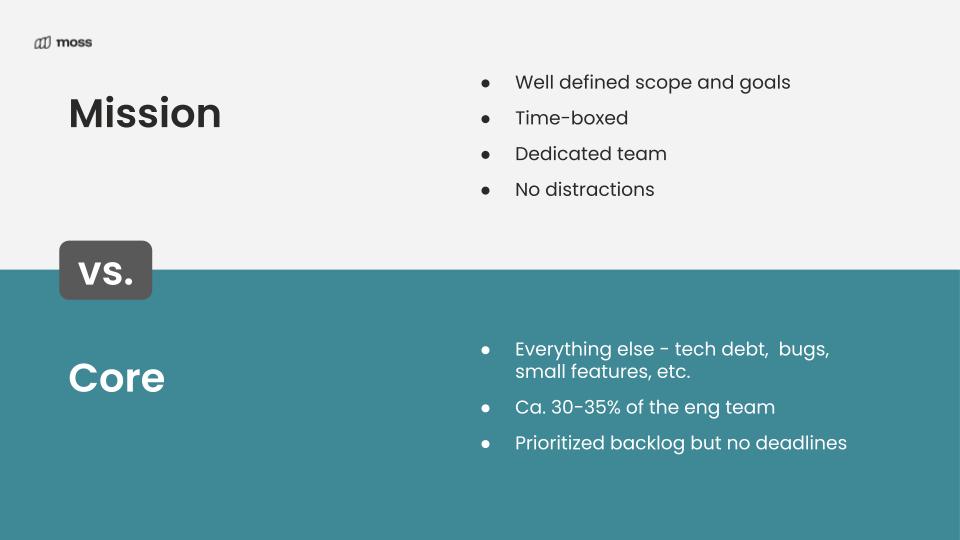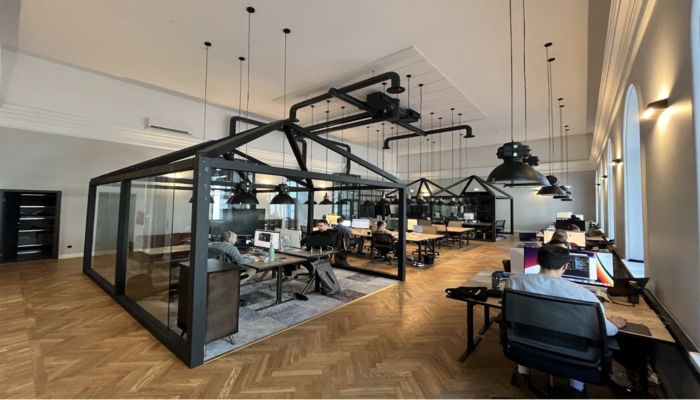Scaling an engineering team is essential for success, but when done poorly, it leads to chaos. Many startups fall into the trap of expanding too quickly and losing focus, but Nikolay Mironenko guided Moss from 5 to 50+ engineers while preserving its culture, efficiency, and momentum. Here’s how they got it right.
For startups, scaling fast means driving innovation and growth. Yet, without structure, it leads to inefficiencies and misalignment. Many startups expand too quickly, only to face setbacks that slow them down. The key isn’t just speed—it’s scaling with strategy and sustainability. Learning from companies that have grown while maintaining focus and stability makes all the difference.
Why Growing Too Fast Can Backfire
Many rising startups fall into the trap of hypergrowth, believing that hiring aggressively is the only way to maintain momentum. However, expanding an engineering team too quickly introduces several risks:
1) Cultural Dilution
A startup’s culture is built by a small, tight-knit team with the same vision and values. Scale too fast, and that foundation starts to crack. Bringing in too many new hires at once can create misalignment—if they don’t truly connect with the mission, teamwork becomes fragmented, and decision-making loses consistency. Growth isn’t just about hiring more people; it’s about making sure they integrate effectively and strengthen the culture, not dilute it.
2) Lack of Onboarding and Knowledge Transfer
When you bring in a wave of new hires, your existing engineers have to shift their focus from building to training. If there’s no structured knowledge transfer in place, you risk slowing down development instead of speeding it up. Growth should accelerate progress, not create bottlenecks. Integrating new team members should not come at the cost of pulling senior engineers away from critical work.
3) Tech Debt and Engineering Bottlenecks
More engineers do not automatically translate to faster development. If processes, code architecture, and technical guidelines are not in place, new hires may introduce inconsistent coding styles, duplicate work, or unscalable solutions, ultimately increasing tech debt and slowing innovation.
4) Team Fragmentation and Communication Breakdowns
In small teams, communication is organic. As headcount grows, alignment becomes harder, requiring structured processes, more transparent roadmaps, and cross-functional collaboration to avoid teams working in silos.
These challenges are common in startups that scale too quickly after sudden success without a solid internal structure. Without clear processes, defined roles, and scalable workflows, rapid growth can overwhelm teams, leading to misalignment, inefficiencies, and bottlenecks.
How Moss Scaled Without Roadblocks
At Moss, one of Europe’s leading fintech startups, scaling the engineering team from 5 to 50+ developers in just a few years required a strategic and flexible approach focused on adaptability over niche expertise. Instead of hiring just to fill seats, Nikolay Mironenko, Moss’s Director of Engineering, co-founder, and head of one of its largest R&D centres in Tallinn, Estonia, led the effort to build a highly versatile team that could grow with the company’s evolving needs.
Tribes at Moss are large, cross-functional teams responsible for specific customer-facing services or internal platforms. Each tribe includes all the necessary roles beyondengineering and typically consists of 15–16 people.
While in most startups, tribes usually represent just a set of fixed teams with a fixed responsibility area, in Moss it’s different. It divides work into Missions and Core teams. A Mission and Core model is when dynamic and static structures work together to maximise flexibility. It splits engineering work into two key streams:
1) Core Team (5 Engineers per subteam) – Responsible for maintaining existing systems, fixing bugs, and ensuring the stability of the products. They handle everything the tribe owns, ensuring it continues to function smoothly.
2) Mission Teams (2–3 Engineers per mission) – Assigned to time-boxed, goal-oriented projects focused on new features or improvements. These missions function as bets, meaning they are experiments designed to push innovation while maintaining a structured process. Each mission lasts no longer than three months.

Engineers constantly rotate between mission and core teams to maintain diversity in their work and avoid stagnation. This approach exposes them to new feature development and system maintenance, building a well-rounded skill set. It also keeps engineers engaged and improves team flexibility and scalability, allowing them to adapt quickly to different codebase areas and contribute where needed.

Each tribe has an Engineering Manager and a Group Product Manager who are accountable for the high-level roadmap. New missions are launched monthly, and multiple product managers oversee the continuous flow of new initiatives. The roadmap is carefully planned to ensure each mission has a clear start and finish, delivering concrete solutions rather than open-ended projects.
This division ensures continuous innovation and long-term system reliability and allows Moss to scale its engineering operations without sacrificing speed, efficiency, or innovation.
Hiring for Adaptability
As Nikolay Mironenko shares:
“At Moss, scaling from 5 to 50+ engineers wasn’t just about hiring fast—it was about hiring smart. We prioritised adaptability over specialisation, bringing in engineers who could work across the stack, rotate between projects, and balance innovation with stability.
Our Mission and Core model makes this possible, allowing engineers to switch between focused, time-boxed feature development and long-term system maintenance. This structure keeps teams agile, engaged, and ready to pivot as new technologies emerge. This balance of structure and flexibility has made rapid growth at Moss both effective and sustainable.”
This framework emphasises rapid iteration with accountability, balancing speed with structured planning. Moss maintains clear roadmaps, backlog visibility, and early-stage mission planning (3–4 months ahead) to ensure transparency, minimise last-minute bottlenecks, and keep teams focused during expansion. Engineers know of upcoming missions well in advance, allowing for better preparation and smoother execution.
Why Moss Proves Growth Doesn’t Have to Mean Chaos
Scaling too fast can break a company, but with the proper structure, it becomes an opportunity for growth, not chaos. Moss proves that hiring for adaptability, maintaining structured planning, and balancing speed with stability makes all the difference. As more startups navigate hypergrowth, we need companies like Moss to show that scaling smart beats scaling fast.
Nikolay Mironenko is the Co-founder and Director of Engineering at Moss, where he scaled the engineering team from 5 to 50+ members and established a 20-person R&D branch in Estonia. Before Moss, Nikolay Mironenko was one of the first engineers at Wise (formerly TransferWise). He specialises in scaling teams and optimising engineering to drive fintech innovation.



































